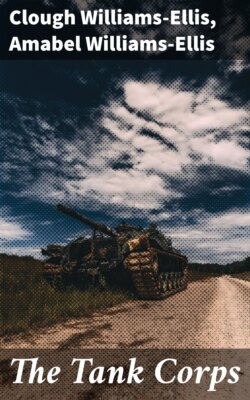Читать книгу The Tank Corps - Clough Williams-Ellis - Страница 9
На сайте Литреса книга снята с продажи.
III
ОглавлениеTable of Contents
We find that the period from August 1915 to February 1916 constitutes a kind of Act I. in the history of Tank administration and manufacture, for the 1914 and early 1915 period is too dim and legendary to serve as anything but prologue.
During the whole of the Act I. period it was the Admiralty and the Joint Land Ship Committee which played the “leads.”
It was the Admiralty which defrayed the whole cost of the extensive experimental work and provided the necessary personnel, and it was by members of the Joint Committee in consultation that the Mark I. Tank, “Mother,” was ultimately designed.
On September 11, two months after Colonel Swinton’s visit, the Experiments Committee, G.H.Q., laid down in an excellent and far-sighted memorandum what were the qualities which they desired should be aimed at in designs for the caterpillar cruiser and what were the tactical purposes which it must serve.
By September 28 the Joint Committee had so far perfected the design of “Mother” as to have had a wooden dummy (officially described as a “mock-up”) made, and on that day her counterfeit was inspected at Wembley by an Interdepartmental Conference, and approved.
Some weeks elapsed while the Joint Committee worked out the further details of their machine, and about December 3 Mr. Churchill wrote a Memorandum entitled “Variants of the Offensive,” in which he paradoxically accentuated the value of defensive armour as a preservative of mobility. There was to be a new form of attack. It was to be launched at night under the guidance of searchlights. Caterpillar Tractors were to breach the enemy’s line, and then turn right and left. The Infantry were to follow them closely under cover of bullet-proof shields.
On Christmas Day Sir Douglas Haig (who had lately taken over from Sir John French, and who as yet “knew not Joseph”) read the paper with interest, and pinned a pencil slip upon it, “Is anything known about the Caterpillar referred to in para. 4, page 3?”
No time was lost in finding out, and a few days later G.H.Q. sent an officer to England to inquire into the matter. This officer was Lieutenant-Colonel Hugh Elles, who was afterwards to be the first Tank General.
By the end of January 1916 the experimental machine—no pasteboard simulation, but “Mother” herself—was complete, and on February 2 the official trial was held at Hatfield, before the Army Council and a representative of G.H.Q.
“Mother” made good, and G.H.Q. asked to be supplied with a certain number of the Land Cruisers. A small Executive Tank Supply Committee with much fuller powers than the old Joint Committee, was formed under the Presidency of Lieutenant (now Colonel Sir Albert) Stern, and orders were at once given to begin manufacture.
So ended Act I.
